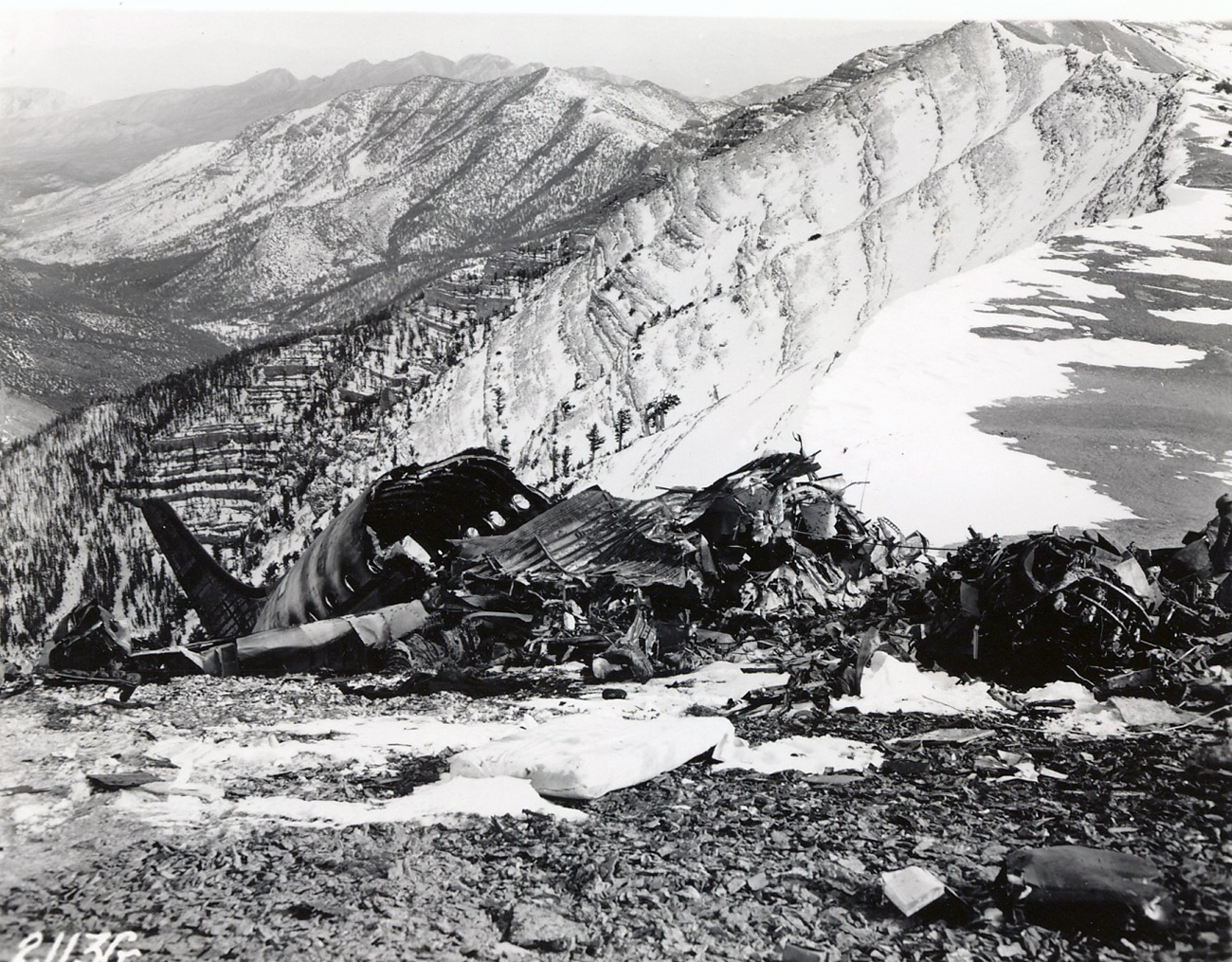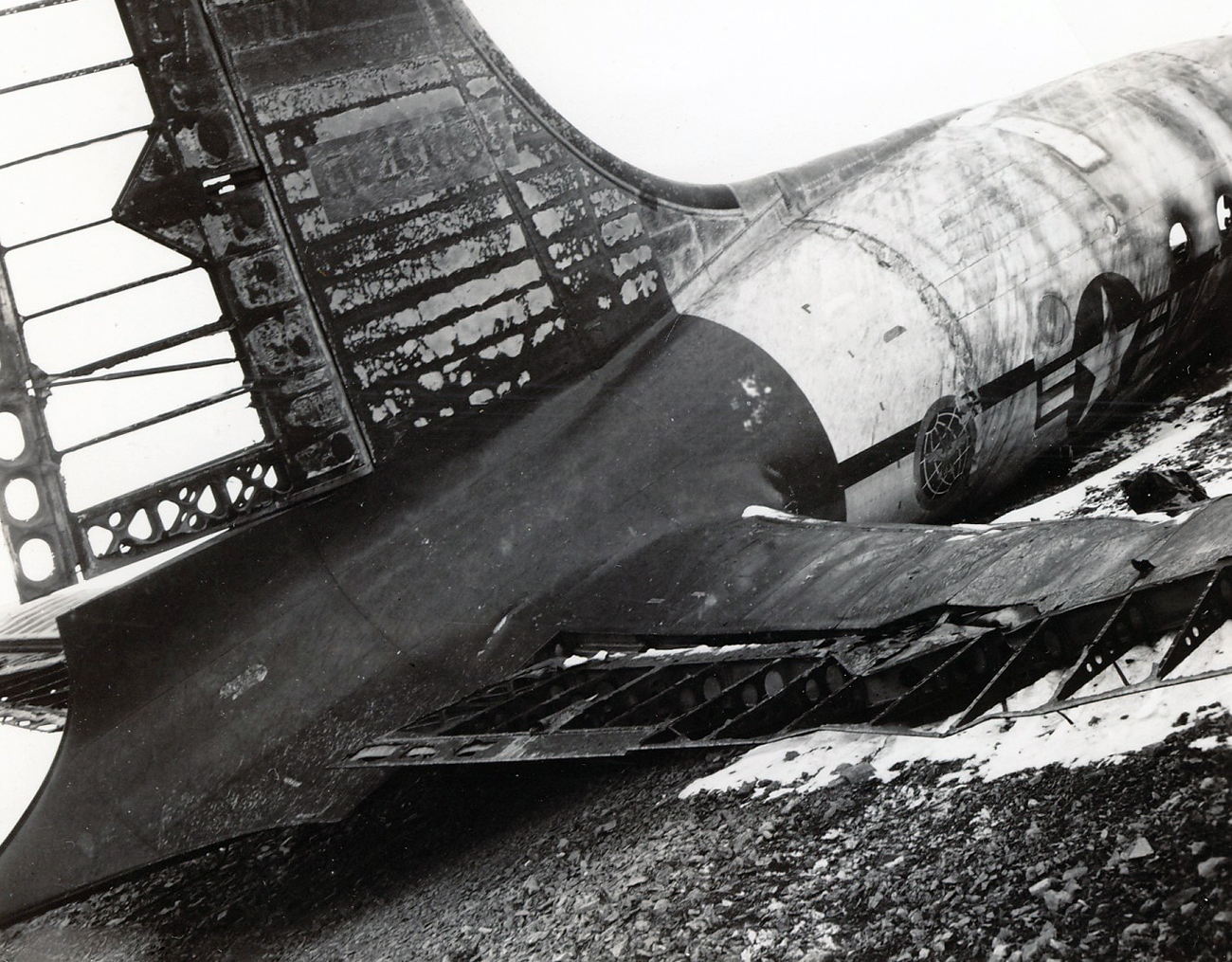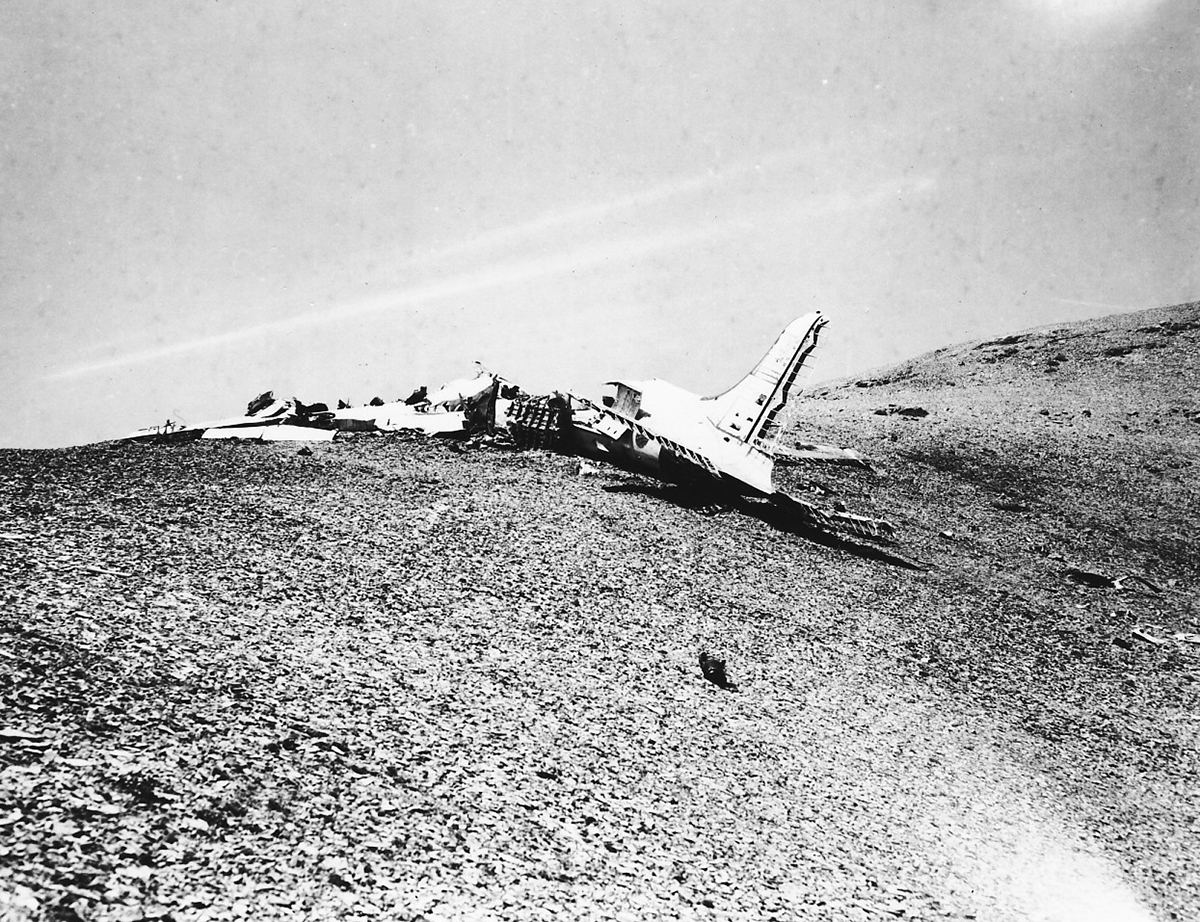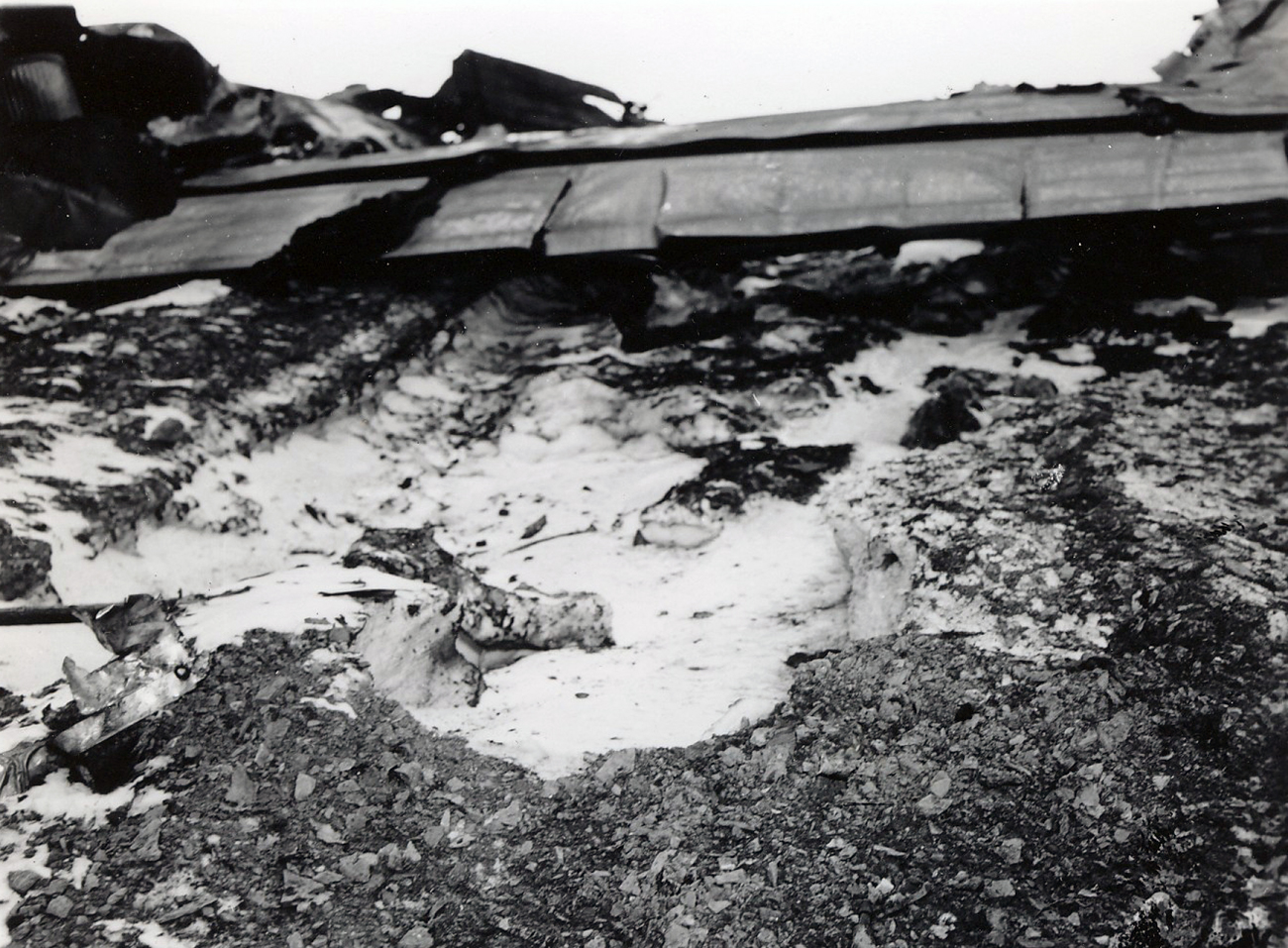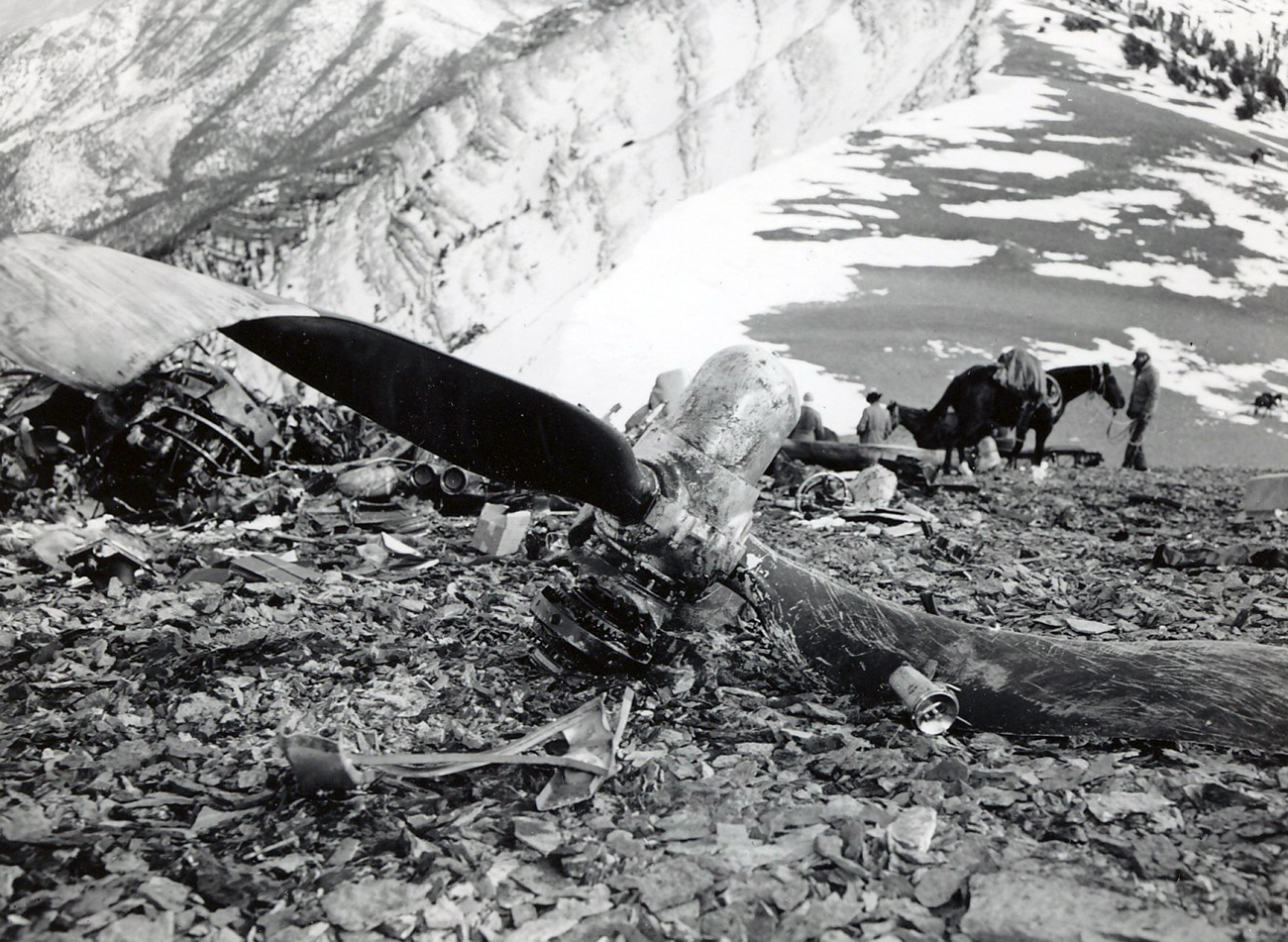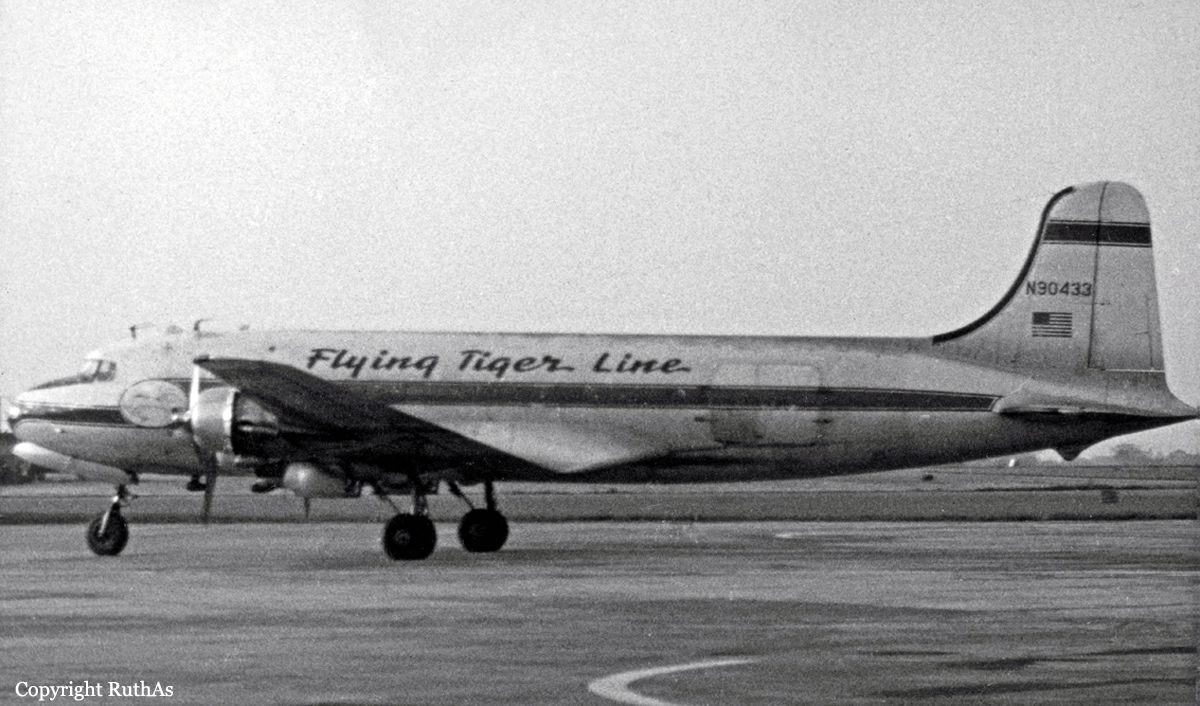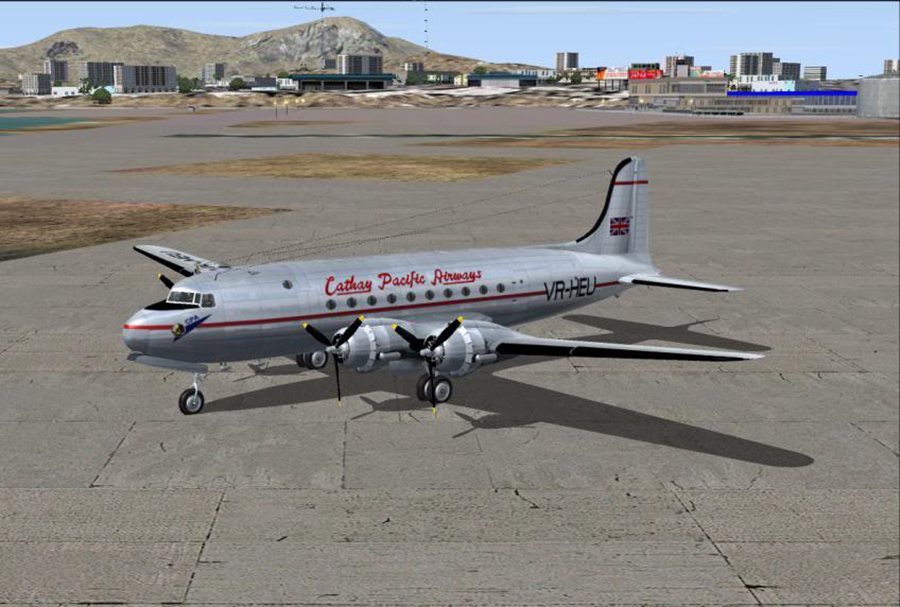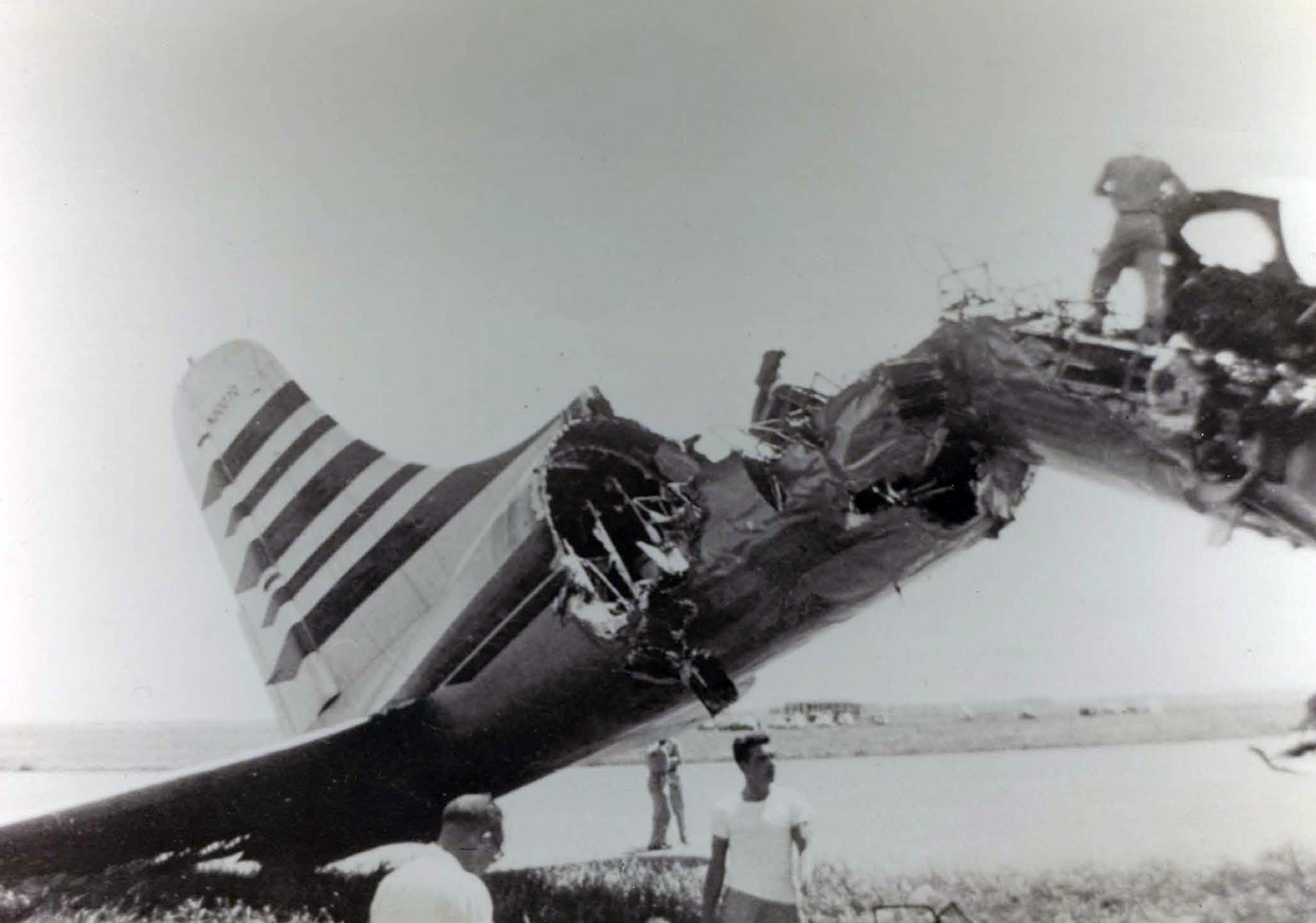Crash of a Douglas MC-54M on Mt Charleston: 14 killed
Date & Time:
Nov 17, 1955
Registration:
44-9068
Survivors:
No
Schedule:
Burbank - Homey
MSN:
27294
YOM:
1945
Crew on board:
4
Crew fatalities:
Pax on board:
10
Pax fatalities:
Other fatalities:
Total fatalities:
14
Circumstances:
The four engine aircraft was completing a flight from Burbank to the secret base 51 (aka Homey) located near Groom Lake, Nevada, carrying a crew of four and 10 passengers, atomistics, engineers and scientists who were taking part to the Lockheed U-2 reconnaissance aircraft building program. Due to the fact that the flight was secret, the crew did not have any radio contact with ATC. Enroute, the crew encountered poor weather conditions with thunderstorm activity and low visibility. While flying in clouds at an altitude of 11,300 feet, the aircraft hit the slope of Mt Charleston about 50 feet below the summit, killing all 14 occupants.
Probable cause:
It was determined that the aircraft was off course at the time of the accident, probably because the crew became lost in the clouds.
